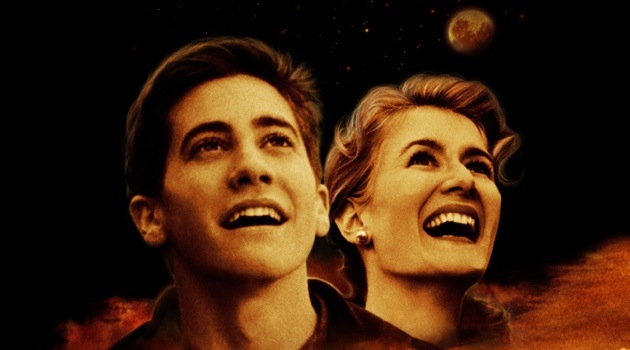Some lessons must be learned through excruciating pain. Others can be delivered through simple analogies. Happily, these less-grueling lessons are often part of development processes and strategies within human factors engineering and user experience.
Some lessons must be learned through excruciating pain. Others can be delivered through simple analogies. Happily, these less-grueling lessons are often part of development processes and strategies within human factors engineering and user experience.
Considering that user interfaces are evolving at exponential rates, associated practices must evolve with them. Still, certain core philosophies remain constant and can be taught through a digestible frame of reference: pop culture. Even those thrust into UX management roles without traditional schooling can understand the basics, and who better to give us another round of UX lessons from Hollywood than Laura Dern?
Lesson #1: The Details Are Surrounded By Dung
“That is one, big pile of shit.”
In the smash, 1993, action flick Jurassic Park, Laura Dern plays a scientist brought to a remote island for her expert opinion on an amusement park where dinosaurs have been brought back to life in captivity. While touring the facility, her convoy comes across an ailing triceratops, inexplicably lying on its side. Dern’s character does an initial assessment based on tongue polyps and some associated puss, but eventually moves to an eight-foot-high pile of … well … dino-crap and literally digs in. Buried within the droppings she looks for evidence to support her hypothesis: that the triceratops is feasting upon incorrectly engineered fauna that’s likely poisonous to the resurrected creature.
This is the perfect analogy for usability testing. The devil is not in the details, per the cliché. Details are surrounded by the Devil. The engineering minutiae is always buried by a whole bunch of useless stuff, and the secret to great engineering is to go digging for those nuggets of wisdom. A user experience engineer might orchestrate hours of testing of various participants attempting scripted tasks on a prototype product and see only minutes of miscues, confusion, or comments that hint at a better design.
That is, in fact, the whole point of usability testing: uncover the important things that aren’t obvious. As said best by Charles Victor Cherbuliez (who does not appear in the film), “What helps luck is a habit of watching for opportunities, of having a patient, but restless mind, of sacrificing one’s ease or vanity, of uniting a love of detail to foresight, and of passing through hard times bravely and cheerfully.”
So the next time someone tells you “the Devil is in the details”, make sure to counter with “No, the details are in a pile of crap.”
Lesson #2: Have Faith in Iterative Testing
PRINCIPAL TURNER: “Miss Riley, our job is to give these kids an education.”
MISS RILEY: “Mmm-hmm.”
PRINCIPAL TURNER: “Not false hopes.”
MISS RILEY: “False hopes? Do you want me to sit quiet, let ’em breathe in coal dust the rest of their life?”
PRINCIPAL TURNER: “Miss Riley, once in a while … a lucky one … will get out on a football scholarship. The rest of ’em work in the mines.”
MISS RILEY: “How ’bout I believe in the unlucky ones? Hmm? I have to, Mister Turner, I’d go out of my mind.”
October Sky (1999) is set in a 1950s mining town called Coalwood, where an intelligent, motivated kid named Homer, inspired by the October launch of Sputnik, decides to escape his surroundings by becoming a rocket scientist. He and his friends create an uproar in the community with some public flight trials and associated errors, sometimes of epic proportions. Many of the onlookers (especially Homer’s father) think they are foolishly wasting their time and putting other people’s safety in jeopardy. Only one teacher, Miss Riley (played by Dern), supports their efforts and encourages them to compete in the national science fair by literally “shooting for the stars.”
The best UX leaders understand their role is very much like a teacher’s. They are overseeing “students” who will almostly assuredly reach a less-than-optimal answer at the start. They must sustain the incredible faith and support required to turn the “failures” into success. As best captured by a Samuel Smiles quote steadfast on the Tengler family chalkboard growing up: “It is a mistake to suppose that men succeed through success; they much oftener succeed through failures. Precept, study, advice, and example could never have taught them so well as failure has done.”
Eric Reis adds to this notion in Lean Startup, the management mindset should be, “We have successfully, faithfully, rigorously executed a plan to achieve failure.” I have personally witnessed many project-plugs being pulled when the beta struggled and management felt “putting good money atop of bad money” would be a mistake.
Have faith. Believe in your iterative process. Shoot for the stars.
Lesson #3: Statistics Can Be Both Powerful and Dangerous
RON KLAIN: “How hard is it to punch a paper ballot?”
MICHAEL WHOULEY: “It’s pretty God damn hard when you’re eighty something years old, you’re arthritic, and you’re blind as a fucking bat. Unfortunately for us, blind fucking bats tend to vote Democratic.”
The film Recount (2008) is based upon the real life events surrounding the 2000 Presidential Election where, as you likely recall, the Hanging Chads of Dade County forced a recall of the Bush/Gore votes in Florida. Interestingly, the entire cast of Recount eventually met their character’s real-life counterparts except for Dern, who likely never met Katherine Harris (the Secretary of State for Florida at the time) since she portrayed her as a politically-driven, superiority-complex-laden woman who understood the goal as a Republican win rather than truth and justice prevailing. Statistics and inclusion of the eldery vote be damned; Bush was to be President of the United States of America.
The softball-pitch UX analogy would be designing an interface that all demographics can understand and manipulate, but there’s an underlying lesson to be learned here. Obtaining and analyzing data is the underlying power of iterative testing. Without statistics on this data, the engineer is crafting the product’s design around individual opinions, which is irresponsible and possibly dangerous. That said, if the UX engineer does not separate desired outcomes from study design by cutting the data, the numbers can quickly overpower the truth.
Excluding the elderly vote altered the conclusion of the election data and changed a nation. UX testing can be equally biased by prejudiced testing procedures and post-test analyses. For example, it is a common practice to test within an organization for budgetary reasons, but that typically excludes the following demographics: youth, elderly, uneducated, unemployed, homeless, unlicensed drivers, and those unfamiliar with the company’s product. And I have rarely ever seen graphs that separate the stakeholders (e.g. tester’s boss) from the customer cohort, which injects another whole level of bias into the data.
So how does the UX engineer avoid this bias? Certainly he or she can employ an external testing firm and use population sampling to create a double-blind test, but even then, most hired researchers know the product engineering team desires good grades (e.g. tremendous task completion and user satisfaction) so outcomes may be accidentally/intentionally manipulated. I’ve found the best way, if time and resources permit, is to have two engineers separately test and separately analyze the product (almost akin to the Republicans and Democrats!) and see if their answers agree.
Lesson #4: UX Investigations Can Go Too Far
SANDY WILLIAMS: “Jeffery, we shouldn’t do this.”
JEFFREY BEAUMONT: “Why not?”
SANDY WILLIAMS: “’Cause it’s crazy … and dangerous.”
In the offbeat 1986 thriller Blue Velvet, a college student named Jeffrey Beaumont stumbles upon a severed human ear in a field. With local police detective unable to investigate, Jeffrey and the detective’s daughter, Sandy Williams (played by Dern), decide to do their own reckless investigation. In a brief moment of clarity before the exploration goes too far, Sandy pleads with Jeffrey to abort the mission. This pleading is quickly dismissed, and the next 90 minutes are an unsafe thrill ride through a depraved underworld.
Human factors engineers in medical, automotive, aeronautical, and several other fields are constantly faced with the question of “How far is too far?” Pushing the testing envelope for 3D navigational maps, surgical equipment usability, or emergency landing controls can get to valuable answers needed for the good of society, but they can also quickly put the participant, the experiment, or both in a safety-critical situation.
For example, I recently participated in a voice recognition study where the experimenting co-worker had me drive in rush hour traffic and slowly read thirty different words from a 12-point-font list. Due to unease regarding driver distraction, I ended the test abruptly. Yes, the assessment might yield answers regarding dialect recognition within extreme “signal to noise ratio” conditions, but safety must prevail or the lawyers will shut down the UX department.
How does the UX manager make sure precautions are being applied? Many organizations staff or hire an institutional review board to oversee procedures and make sure the processes do not cause any physical or mental anguish to those involved. These boards have predefined membership including mandatory persons from outside the organization to assure perspective. Yes, they take extra time and money, but they help to avoid accidentally ending up on an unsafe thrill ride.
Lesson #5: Understand the Financials of Personalization
“Welcome, parents! I am Prudence Simmons, Director of The Early Human School. And at EHS, we know … we know that no two early humans are alike, so why should their educational experiences be identical? Right?!”
In the 2010 hit Little Fockers, Greg Focker and his father-in-law, Jack Byrnes (played by Ben Stiller and Robert De Niro repectively), investigate a high-priced private school. They witness a presentation by the school’s director, played by Dern, who explains that a tailored education allows the children (“early humans”) to thrive in society. At the conclusion of the walking tour, Jack turns to Greg and says, “I like what I’m seeing from this place, and I’m sure it doesn’t come cheap.”
Personalization or “individualization” does impress customers. Talking to almost any user experience expert, you’ll hear a battle cry to allow the user flexibility. For instance, Jakob Nielson’s Ten Usability Heuristics include the suggestion to “allow users to tailor frequent actions.” Helen Walters’s “Four Elements That Make a Good User Experience Into Something Great” recommends empowering the user for a “personalized yet reliable experience.” Thorsten Blecker says product customization is a way to “… differentiate goods from competitors.” But Little Fockers implies two results from the personalization: quality and cost. The latter is a double-edged UX lesson: personalization can quickly cost more than providing only vanilla, but customers will expect to pay more for the improved experience.
So what should the UX engineer do about personalization or customization? In Booz Allen’s “Five Principles of Smart Customization,” there is a wise roadmap to follow: 1) Approach the customization strategically: “Can there be a common architecture across the customization?”, 2) quantify the value of the variety, 3) root out the costs of complexity, 4) align the business model, and 5) manage changes programmatically: beta test in one market or business unit. In other words, understand the full business case upfront and decide if that personalization is something for which Fockers will pay!
In the end, all five of these lessons boil down to this: create a design that flexibly meets the customer’s individual goals by testing it (in a safe manner!) and improving the UX until it’s fantastic. If you do, your marketing team will be quoting Dern from Inland Empire: “All I see from this is blue tomorrows!”
Lead image of Laura Dern courtesy Featureflash/Shutterstock












